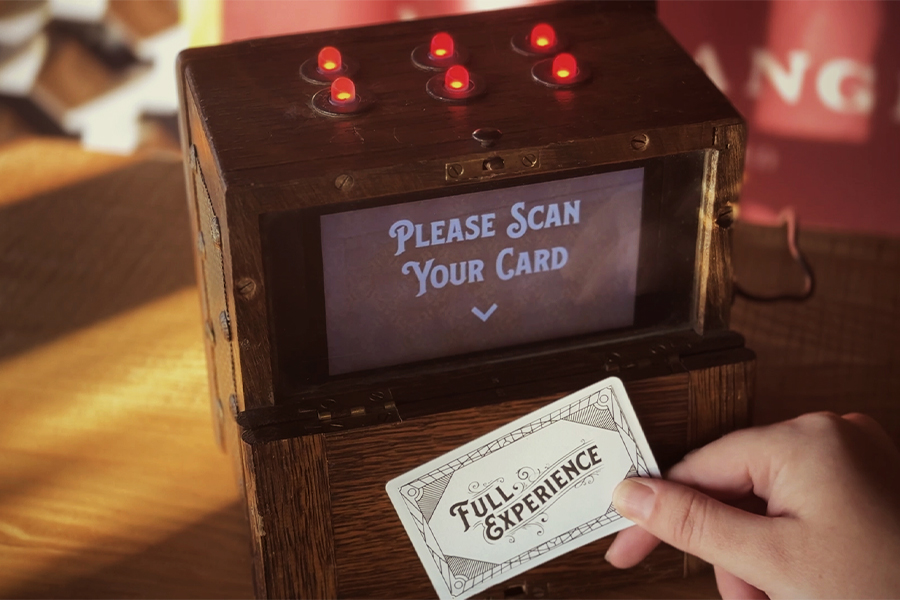Implementing accessibility, personalisation, and localisation can be a pain point. It’s expensive. It’s hard. But what if it doesn’t have to be?
Meet RFID (Radio Frequency Identification) technology. Your new BFF. Well, I’m sure you’ve already met.
For well over half a century, RFID technology has been tracking us in employee badges, keyless entry, toll road tags, and contactless payments. Handy? Sure. Exciting? Nope.
So the team at NeoPangea – a creative partner for imaginative brands who dare to dream – asked: what if RFID could be used to create custom exhibits and make attractions that transform the visitor experience?
What if it could magically bring exhibits and attractions to life? And what if, at the same time, we could use the same RFID technology to simplify your team’s life a little?
NeoPangea’s Emmy-nominated work for clients including Disney, National Geographic, Paramount, McCormick & Company, NBCU, Smithsonian, Hershey’s and many more make it one to watch in the immersive space. And when it comes to RFID, they’ve already made giant strides with Harry Potter: The Exhibition.
In this Campfire, Baron of Pixels Brett Bagestose and Chancellor of Technology Shane Hoffa take a dive into how an RFID bracelet turned visitors into a protagonist of their own journey through the Wizarding World.
You’ll learn how they personalised the visitor experience without any friction for the visitor using RFID technology, exploring the storytelling beats and technology integrations throughout the experience.
But this isn’t just about wizardry. Whether it’s bringing dinosaurs to life or diving into historical adventures, RFID can usher in a new era of experiences that can turn dipping attendances around and get guests coming back for more. And that’s the real magic here.
Read on to discover how you might begin using RFID technology to enhance your own experiences in a way that’s both affordable, efficient and magical.
RFID And The Protagonist: Magically Personalising The Experience For Harry Potter: The Exhibition
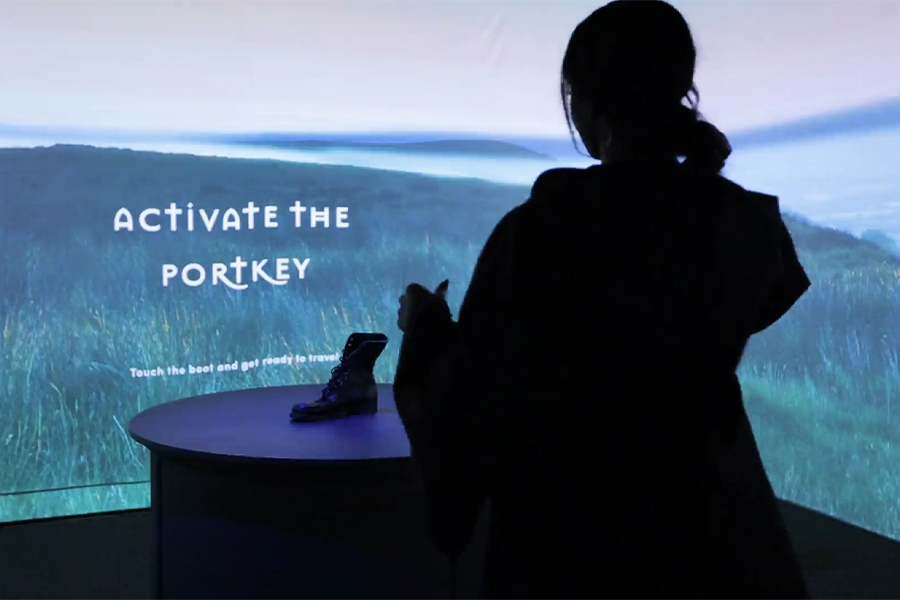
NeoPangea were one of several vendors who worked on this groundbreaking immersive exhibit, which is currently touring in four continents and covers 80-120,000 square feet of themed immersive space. They were responsible for the interactive content and creating an experience that felt personalised, accessible, and magical for all those moving through the space.
The team saw an opportunity to use RFID to solve these challenges. When visitors begin their journey from Platform 9 ¾ at “Kings Cross Station”, they’re given a themed RFID bracelet that they can take with them when they leave. They enter their information, including email address and language, into a kiosk, which becomes associated with their bracelet.
As they travel through themed spaces like Hogwarts, Hagrid’s Hut and the Great Hall, this RFID data interacts with various experiences to provide a more engaging experience. For example:
- The Sorting Hat. Early on you have a picture taken and are sorted into your Hogwarts house. This is saved to your profile and as you progress and interact with the exhibit, you gain “house points” that culminate in a team leaderboard at the end.
- The Marauder’s Map. As you move into a large room that comfortably holds 150 people, you scan your badge at entry. This triggers a surprise and delight moment where your name pops up on a digital Marauder’s Map on the walls, mirroring your position.
- Casting a Patronus. By waving your hand like a magic wand you can cast your “Patronus” (a sort of spirit animal), which will also be saved into your data.
- Potions Class. In this physical to digital activation, when you select ingredients on a digital screen the corresponding physical potions bottles light up, and a cauldron glows red or green based on your progress.
- Divination Table. Using a simple Pepper’s Ghost-style illusion whereby a horizontal monitor was laid underneath a table and a glass ball, visitors were greeted by name and with their photo before being shown their “prophecy”. This is a reminder that sometimes the four-dollar solution works just as well as the million-dollar one!
- Duelling Wands. Another physical to digital activation where a physical wand connected to a touch sensor to give the illusion of two people doing an epic battle, in an impressive photo/video opportunity.
As ever, it’s important to consider the three stages of experience design and where RFID might support them:
- Anticipation: if the onboarding process had started from home, this could have been even more engaging.
- Participation: the journey through the experience itself as outlined above.
- Reflection: visitors who provided their email were sent a summary of their experience afterwards including all the photo opportunities, points collected for their house, Patronus cast, and more, reminding them of the great experience they had. This could also present an opportunity for them to continue the narrative adventure at home, or to send them targeted emails based on their interests.
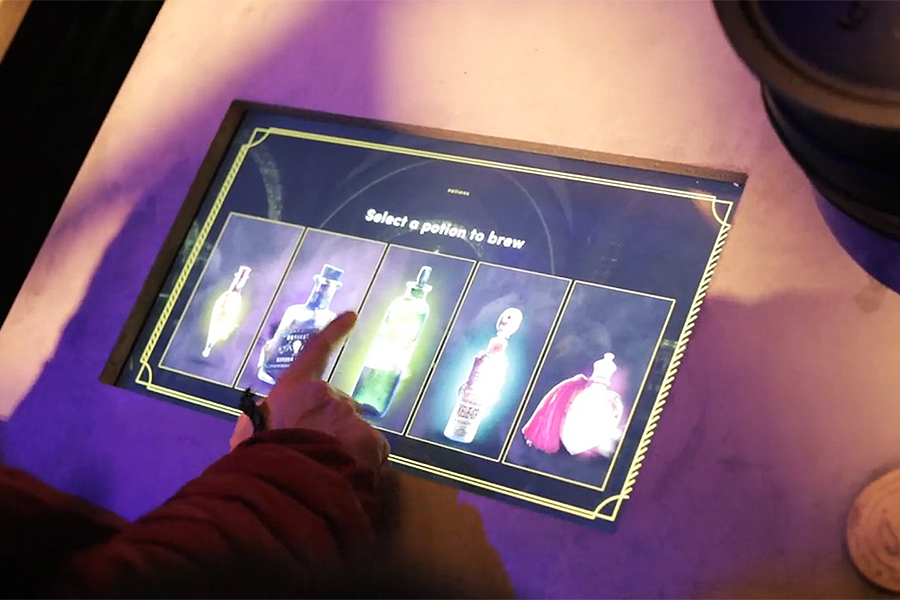
How Does RFID Invisibly Enable Personalisation?
RFID has been around for a long time: it was invented by the military in 1948 and has got smaller and cheaper over time, to the point that it now shows up in something as everyday as your hotel room key.
RFID consists of a small chip and a copper coil. When the coil comes into contact with an electromagnetic field from a reader, it powers the chip enough to send data back to the reader, which then sends it to the application host and triggers an action. This enables you to store a unique ID on an RFID card and link it to a record on a database.
What Are Other Potential Uses For RFID?
There are lots of ways in which we might use RFID in experiences to make them more localised, personalised and accessible:
- Assist user-generated content: RFID could enable someone to create something in multiple places, and be able to keep track of their progress or take it home.
- Create a Hero’s Journey: if we think of a visitor as a character in an immersive story, RFID can help onboard them and track their choices through an experience, remembering and changing the outcome as a result.
- Increase dwell time: in an art museum, you could use RFID tracking to understand where people are spending a lot of their time. If there’s too high traffic in one area, you could spread out exhibits to improve flow – or even have more of those things across the exhibit.
- Understand people’s preferences: by allowing people to favourite elements of an experience, you could support their interests by sending them follow-up information. This information could be gathered passively by monitoring the way they move through it, or actively by getting them to register their favourites.
- Improve accessibility: once someone has onboarded their information, this can be saved so they never have to type it in again. If they have sensory or other needs, the experience could then adapt to them using RFID data – for example with their reading level, lighting, or language.
- Assist operations: where often shutting down an experience is a manual task than can take hours, with an RFID card you could simply touch a sensor and get the experience to shut down on its own.
How RFID Turned A $200k Accessibility Challenge Into A $200 Solution
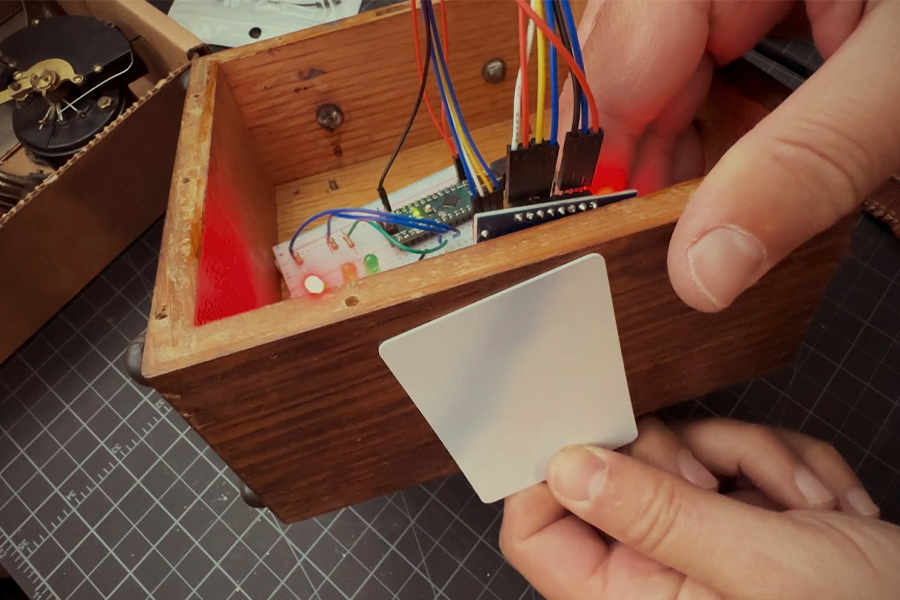
Harry Potter: The Exhibition was a large, tech-rich experience with a budget – but what if you don’t have the same resources?
To demonstrate how RFID can offer an efficient and cost-effective solution, NeoPangea shared an example of a project undertaken for a non-profit client who wanted to bring accessibility and localisation to an experience. They had been given a quote of $200k, and wanted to know if they could do it for cheaper
NeoPangea put together a proof of concept to show what they could do with a limited budget. They took an old multimeter and put new RFID tech in.
The result was a model where you could scan an RFID card marked “Low Sensory”, “Spanish Language”, etc, and run the same interaction in different modes. The full prototype cost just $200, and other RFID experiments might only require kit costing $20.
The WXO Take-Out
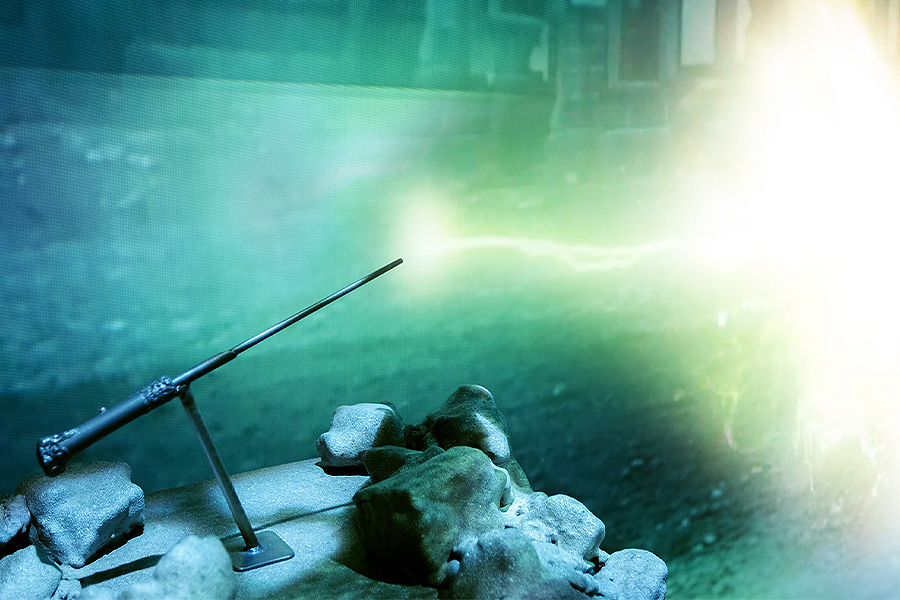
While personalisation has its challenges – we’re all in the quest to connect people through shared experiences, and hyper-personalisation can isolate us instead – it also opens up huge opportunities for people to be in the same space and having different, relevant experiences that better suit their needs.
As accessibility becomes more of a primary consideration for experience creators, with experiences like Wake The Tiger, Meow Wolf and Dreamachine all having low sensory versions, something as simple as RFID could open up experiences for those with different needs at the same time as others.
And the potential to better understand how people interact with our experiences, give them moments of surprise and delight, and support their journey both before and after the experience – at an affordable price point – is something we should all be open to explore.
So next time you’re designing an experience, ask yourself:
- What part of my experience would I like to personalise?
- How might I use RFID to aid this personalisation?
- How might I use RFID to make my experience more accessible?
Want to come to live Campfires and join fellow expert experience creators from 39+ different countries as we lead the Experience Revolution forward? Find out how to join us here.

